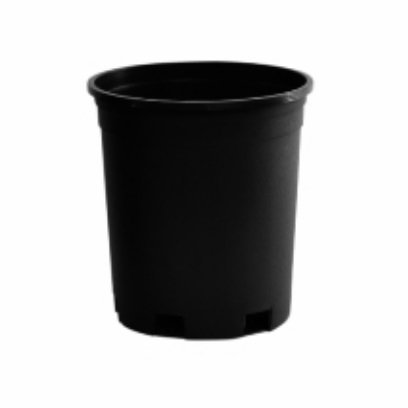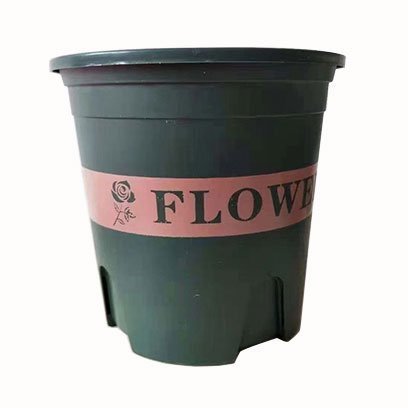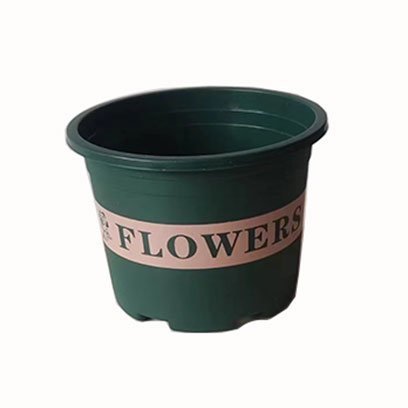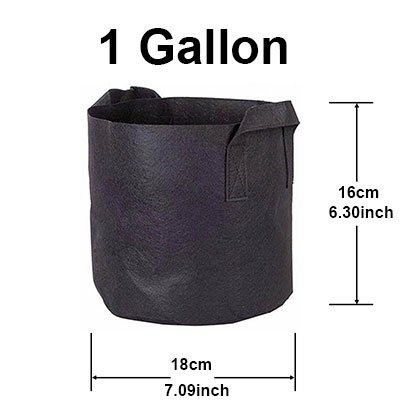What Vegetables Can I Grow in 1 Gallon Pots?
Key Considerations for Container Gardening
Drainage and Pot Material
First, drainage is crucial. Pots with drainage holes can prevent waterlogging. It can lead to root rot. Plastic, terracotta or fabric materials all have their benefits. Plastic being lightweight and terracotta provides breathability.
Soil Types and Amendments
Next, selecting the right soil. You should use a high-quality potting mix. It can retain moisture while allowing for proper aeration. Amendments can enhance nutrient content and promote healthy plant growth.
Watering and Sunlight Requirements
Finally, consider watering and sunlight needs. Most vegetables in 1-gallon pots require consistent moisture. So check the soil regularly. Water when it feels dry an inch down. Sunlight is equally important. So aim for 6-8 hours of direct sunlight daily.
Best Vegetables for 1-Gallon Pots
Leafy Greens
Lettuce is a popular choice. For example, butterhead and loose-leaf varieties. These greens grow quickly. You can harvest within 30 days after planting. You should use well-draining soil. It can retain moisture yet allows excess water to escape. Regular watering is crucial.
Spinach is another excellent option. It thrives in cool weather. You can sow it in succession for a continuous supply. Spinach seeds germinate quickly. Harvest the plants within 6-8 weeks. Provide 6 hours of sunlight daily to ensure good growth. But be mindful of extreme heat. This can cause spinach to bolt.
Kale is also suitable for 1-gallon flower pots, especially dwarf varieties. For example, Dwarf Blue Curled. You can harvest this nutrient-dense leafy green continuously. Simply pick the outer leaves as needed.
Kale prefers cooler temperatures. It is a great option for spring and fall planting. Kale requires consistent moisture. It benefits from a high quality potting mix with compost.
Herbs
Basil is particularly popular. It loves warm weather. Regularly harvesting basil plants. Pinch off the top leaves when harvesting. This can promote new growth and prevent flowering, which can lead to a bitter taste.
Parsley is another excellent herb for small containers. It can be versatile for various growing conditions. You can harvest parsley by cutting the outer leaves. This allows the inner leaves to continue growing.
Cilantro has a distinctive flavor. This herb prefers cool temperatures. It can bolt quickly in heat. So you should plant it in spring or fall. Regular harvesting helps extend its growing season.
These herbs are easily accessible for culinary use. Cultivate them close to your kitchen encourages regular harvesting. Additionally, you can grow herbs year-round indoors with proper light. They offer fresh flavor no matter the season.
Compact Vegetables
Radishes typically mature in just 3-4 weeks. Varieties like Cherry Belle or French Breakfast do well in 1 gallon plastic flower pots. They require loose, well-drained soil. Ensure consistent moisture but avoid overwatering. Thin seedlings to allow ample space between them for proper bulb development.
Green onions are another excellent choice. You can easily grow them from seeds or kitchen scraps. Simply plant the white roots in a pot. Filled with rich soil and provide adequate sunlight. You can harvest them continuously by cutting the green tops. They will regrow and give you a fresh supply for salads and dishes.
Baby carrots also perform well in 1 gallon plastic pots, particularly short or cylindrical varieties. For example, Nantes or Parisians. These small carrots require 10-12 weeks to mature. Deep and loose potting soil can allow for proper root expansion. Keep the soil consistently moist for optimal growth. Regular thinning to ensure adequate space for each carrot to develop fully.
Small Fruit-bearing Plants
Cherry tomatoes are particularly popular. You should choose compact varieties. For example, Tiny Tim or Sweet 100. These plants love full sun. They require 6-8 hours of direct sunlight daily. You should regularly prune them. This will improve air circulation and encourage growth.
Peppers, including mini varieties, also adapt well to container gardening. For example, Padron or Lunchbox peppers. These plants thrive in warm conditions. So place them in a sunny spot. Fertilize every few weeks with a balanced fertilizer. This can promote fruit production. Harvesting peppers when they are small. This can encourage more fruit sets.
Strawberry varieties can produce fruit all season. Plant them in a sunny location. Regular watering during fruiting. This prevents the berries from drying out.
Vertical Gardening techniques can maximize yield in small spaces. For example, using trellises for tomatoes and peppers. This can save ground space while allowing plants to grow upward.
Care Tips for Growing Vegetables in 1 Gallon Pots
Watering Techniques
Overwatering can lead to root rot. This causes plants to wilt and develop yellow leaves. In contrast, under-watering can cause leaves to drop and become crispy.
Keep the soil moisture regularly. Insert your finger an inch deep into the soil. You must water if it feels dry. Saturate the soil thoroughly. Make sure water drains from the bottom of the pot. These roots will get enough moisture.
Allow the top inch of soil to dry out between watering sessions. Consistent wetness can promote root rot. During hotter months or windy conditions, you may need to water more frequently. So keep an eye on the weather. Adjust your schedule accordingly.
Fertilization Strategies
Nutrients can deplete quickly in small spaces. A high-quality soil with organic matter can provide initial nutrients. Consider using a slow-release fertilizer as plants grow. You also have organic options. For example, compost and worm castings.
Feed every 4-6 weeks works well for most vegetables. Dilute the liquid fertilizer according to the package instructions. Apply it during watering can ensure even distribution.
Pest Management
Common pests include aphids, spider mites and whiteflies. Regularly inspect your plants for any signs. For example, discolored leaves and webbing.
Consider using insecticidal soap and neem oil. Both of them are effective against soft body insects. Introducing beneficial insects can control pest populations naturally. For example, ladybugs and lacewings.
Maintain good air circulation. Avoid overcrowding in pots. Regular removing dead leaves and debris. This will minimize hiding spots for pests.









